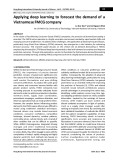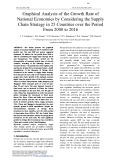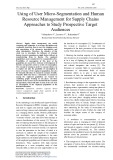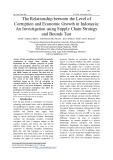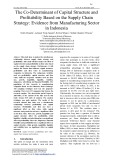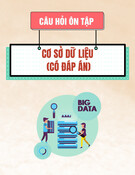
HPU2. Nat. Sci. Tech. Vol 04, issue 01 (2025), 60-70.
HPU2 Journal of Sciences:
Natural Sciences and Technology
Journal homepage: https://sj.hpu2.edu.vn
Article type: Research article
Received date: 08-01-2025; Revised date: 03-3-2025; Accepted date: 27-3-2025
This is licensed under the CC BY-NC 4.0
60
Big Data and business network analysis: applications in management
and optimization
Kim-Thanh Tran Thi
*
University of Economics - Technology for Industrie, Hanoi, Vietnam
Abstract
Big Data has significantly transformed business operations, enabling deeper insights and more informed
decision-making. Its impact is particularly evident in business network analysis, where companies can
now dissect and understand complex supply chains and distribution systems like never before.
Businesses can uncover hidden patterns and relationships by analyzing vast datasets, improving
efficiency and decision-making processes. This paper explores the applications of Big Data in business
network analysis, focusing on how it enhances supply chain visibility, risk management, and demand
forecasting. It also addresses challenges like data privacy, security, and managing large datasets. Finally,
the paper highlights potential future research directions, emphasizing areas for further development that
could drive more innovation in using Big Data for business networks. Through this examination, the
paper aims to clarify how Big Data is reshaping business networks and offer insights into this critical
field’s continued evolution.
Keywords: Big Data, network, analysis, business, supply chain, system
1. Introduction
The advent of Big Data has transformed the business landscape, offering new opportunities for
analysis and optimization. Business networks, encompassing supply chains, distribution channels, and
inter-company collaborations, are crucial for operational efficiency and competitive advantage. This
paper examines how Big Data can be leveraged to analyze and optimize these networks, providing
actionable insights business insights [1]–[3].
Big Data refers to large and complex datasets that traditional data processing software and methods
cannot handle. These datasets come from various sources such as social media, sensors, transactions,
*
Corresponding author, E-mail: ttkthanh@uneti.edu.vn
https://doi.org/10.56764/hpu2.jos.2024.4.1.60-70
















